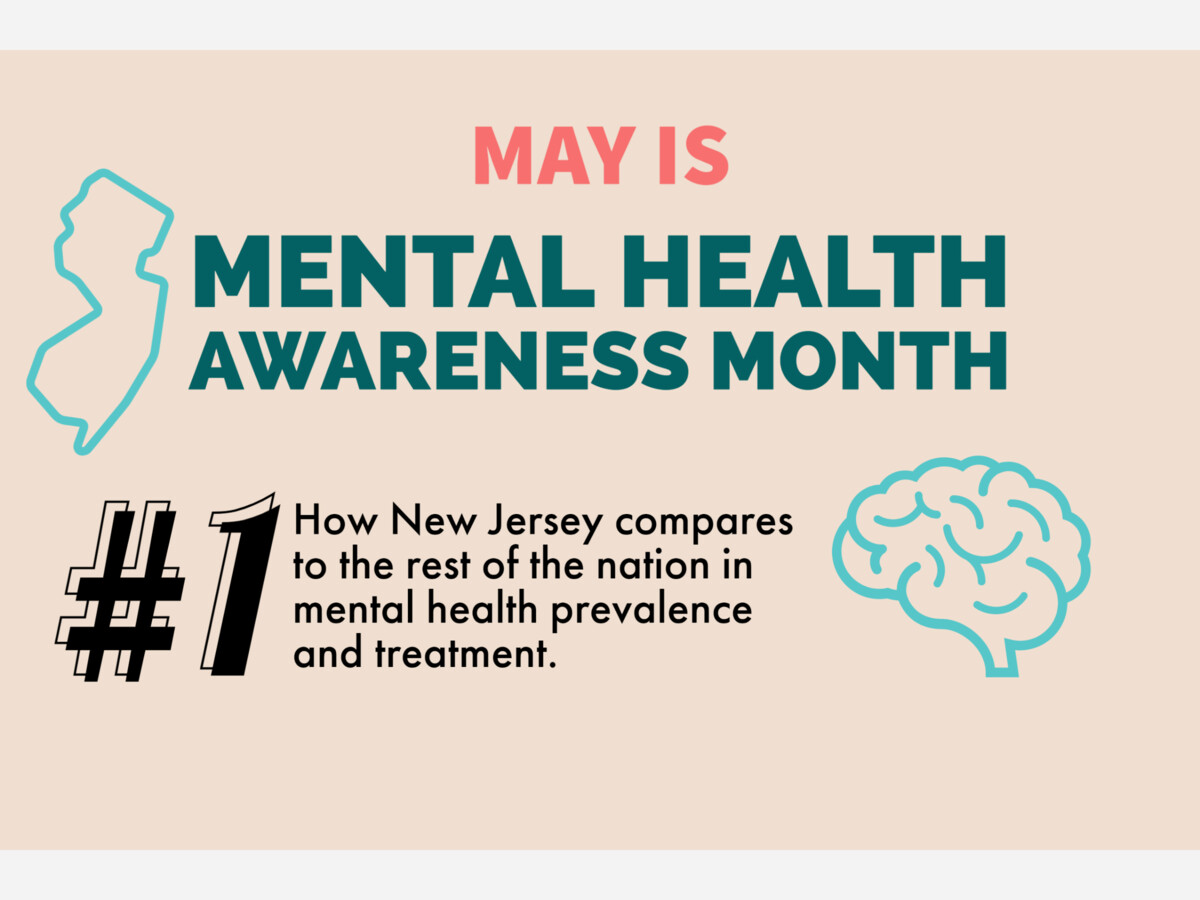Image

Mental Health America (MHA), a national community-based nonprofit dedicated to addressing and promoting the mental health needs of all, ranks New Jersey as the best state for adult access to mental health care.
MHA ranked all 50 states and the District of Columbia by the prevalence of mental illness and rates of access to care for adults.
*Data from Mental Health America Ranking the States 2022
19.86% of adults are experiencing a mental illness, equivalent to nearly 50 million Americans. The state prevalence of adult mental illness ranges from 16.37% in New Jersey (lowest) to 26.86% in Utah.
According to SAMHSA, Any Mental Illness (AMI) is defined as having a diagnosable mental, behavioral, or emotional disorder, other than a developmental or substance use disorder. Any mental illness includes persons who have a mild, moderate, and severe mental illness.
7.74% of adults in America report having a substance use disorder in the past year, while 2.97% of adults reported having an illicit drug use disorder. Additionally, 5.71% of adults in America reported having an alcohol use disorder in the past year.
The state prevalence of adults with substance use disorders ranges from 5.98% in Florida to 12.3% in the District of Columbia.
The prevalence of adults reporting serious thoughts of suicide is 4.58%, that’s an estimated 11.4 million persons – an increase of 664,000 people from last year’s data set.
The national rate of adults experiencing suicidal ideation has increased every year since 2011. The state prevalence of adults with serious thoughts of suicide ranges from 3.79% in New Jersey to 6.19% in Utah.
11.1% (over 5 million) of adults with a mental illness remain uninsured.
There was a 0.5% increase from last year’s dataset in the rate of uninsured Americans living with a mental illness.
Only 20 states saw a reduction in adults with any mental illness (AMI) who are uninsured in this year’s dataset. The largest reductions were seen in Louisiana (5% decrease), South Dakota (-3.3%), Kentucky (-2.4%), and Kansas (-2.2%).
The largest increases in adults with AMI who are uninsured were seen in Iowa (+5.1%), Mississippi (+3.9%), Arkansas (+3.7%), and Missouri (+3.2%)
The state prevalence of uninsured adults with mental illness ranges from 3.8% in Massachusetts to 21.5% in Texas.
Over half (56%) of adults with mental illness receive no treatment. Over 27 million individuals experiencing a mental illness go untreated.
The prevalence of untreated adults with mental illness ranges from 42.6% in Vermont to 67.1% in Hawaii.
Almost a quarter (24.7%) of all adults with a mental illness reported that they were not able to receive the treatment they needed. This figure has not declined since 2011.
Individuals seeking treatment who do not receive the services they need face the same barriers that contribute to the number of individuals not receiving treatment.
The state prevalence of adults with AMI reporting unmet treatment needs ranges from 14.9% in Hawaii to 37.1% in the District of Columbia.
Lastly, 29.67% of adults with a cognitive disability were not able to see a doctor due to costs.
According to the CDC, 12% of people in the U.S. had a cognitive disability, even when adjusted for age. The percentage of people with a cognitive disability ranged from 8.9% in some states to 19.6%.
The prevalence of adults with cognitive disability who couldn’t see an MD due to cost ranges from 18.48% in Rhode Island to 40.65% in Texas.
Adult Mental Health Rankings by State:
7 measures make up the Adult Ranking:
States ranked 39-51 indicate that adults have a higher prevalence of mental illness and lower rates of access to care.
States Ranked 1-10 have a lower prevalence of mental illness and higher rates of access to care for adults.
Youth Mental Health Rankings by State:
For Youths', the prevalence of mental illness and access to mental health care in New Jersey ranks among the top ten as number 7.
The following 7 measures make up the Youth Ranking:
Lower number = better access, less prevalence.
Prevalence of Mental Illness 2022:
MHA then breaks down the rankings further by separating the prevalence of mental illness and access to care.
The 6 measures that make up the Prevalence Ranking
include:
A ranking of 1-13 for Prevalence indicates a lower prevalence of mental health and substance use issues compared to states that ranked 39-51.
Access to Care Ranking 2022:
Access to care rankings indicates how much access to mental health care exists within a state. A high Access Ranking (1-13) indicates that a state provides relatively more access to insurance and mental health treatment.
The 9 measures that make up the Access Ranking include:
*Where New Jersey begins to fall behind
Overall, mental health prevalence and access to care for youths and adults:
Finally, MHA uses the above ranking to determine the overall performance of each state.
An overall ranking of 1-13 indicates a lower prevalence of mental illness and higher rates of access to care. An overall ranking of 39-51 indicates a higher prevalence of mental illness and lower rates of access to care. The combined scores include both adult and youth measures.
The 15 measures that make up the overall ranking include:
Top Ten States Overall:
What else do you want to know about mental health care in New Jersey? Let us know in the comments and you could help us come up with our next story!
Follow Morristown Minute on Facebook, Instagram, and Twitter for more state and local updates!